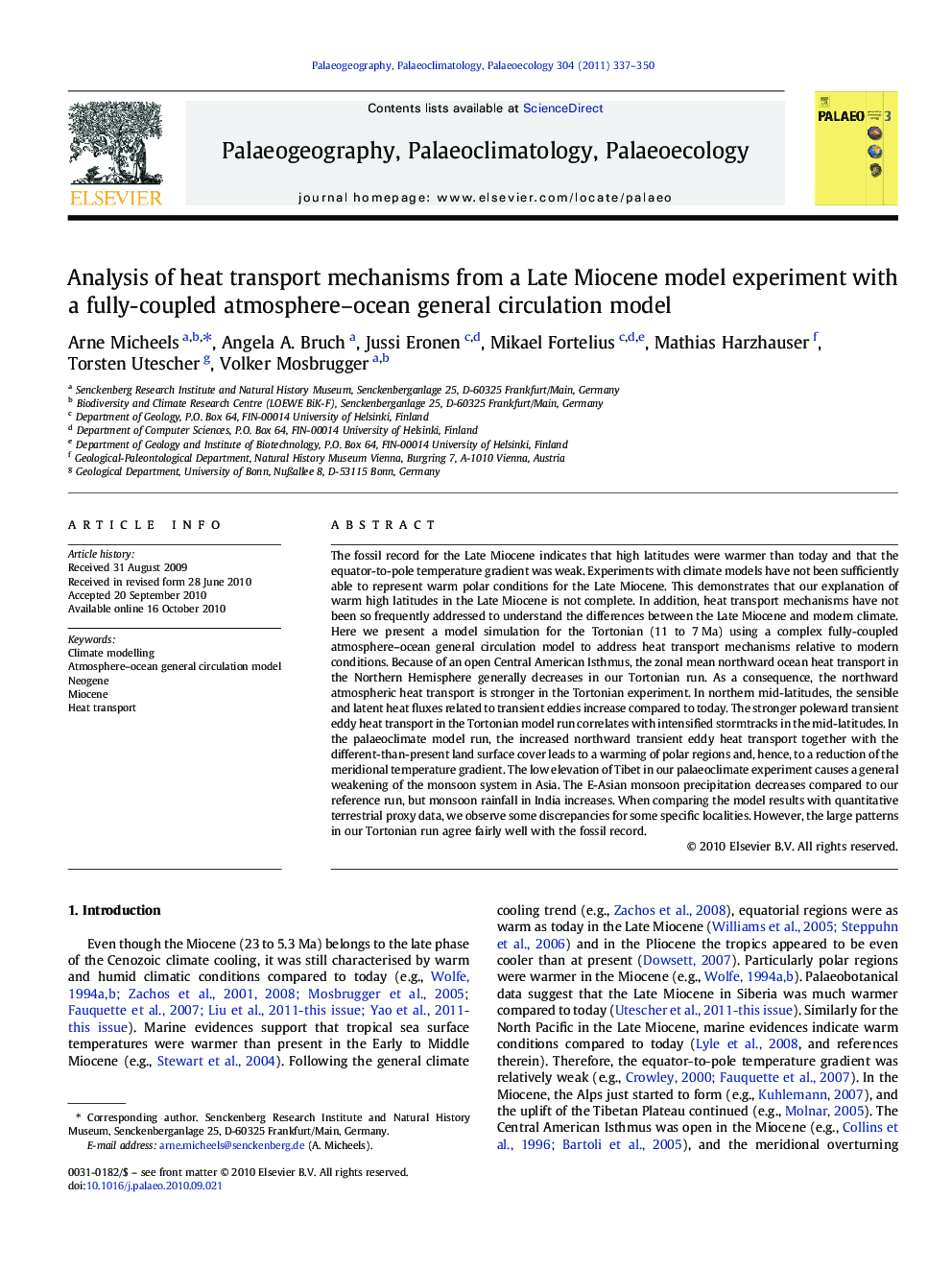| Article ID | Journal | Published Year | Pages | File Type |
|---|---|---|---|---|
| 4467282 | Palaeogeography, Palaeoclimatology, Palaeoecology | 2011 | 14 Pages |
The fossil record for the Late Miocene indicates that high latitudes were warmer than today and that the equator-to-pole temperature gradient was weak. Experiments with climate models have not been sufficiently able to represent warm polar conditions for the Late Miocene. This demonstrates that our explanation of warm high latitudes in the Late Miocene is not complete. In addition, heat transport mechanisms have not been so frequently addressed to understand the differences between the Late Miocene and modern climate. Here we present a model simulation for the Tortonian (11 to 7 Ma) using a complex fully-coupled atmosphere–ocean general circulation model to address heat transport mechanisms relative to modern conditions. Because of an open Central American Isthmus, the zonal mean northward ocean heat transport in the Northern Hemisphere generally decreases in our Tortonian run. As a consequence, the northward atmospheric heat transport is stronger in the Tortonian experiment. In northern mid-latitudes, the sensible and latent heat fluxes related to transient eddies increase compared to today. The stronger poleward transient eddy heat transport in the Tortonian model run correlates with intensified stormtracks in the mid-latitudes. In the palaeoclimate model run, the increased northward transient eddy heat transport together with the different-than-present land surface cover leads to a warming of polar regions and, hence, to a reduction of the meridional temperature gradient. The low elevation of Tibet in our palaeoclimate experiment causes a general weakening of the monsoon system in Asia. The E-Asian monsoon precipitation decreases compared to our reference run, but monsoon rainfall in India increases. When comparing the model results with quantitative terrestrial proxy data, we observe some discrepancies for some specific localities. However, the large patterns in our Tortonian run agree fairly well with the fossil record.
